A timeline of the 2020 fires that changed everything
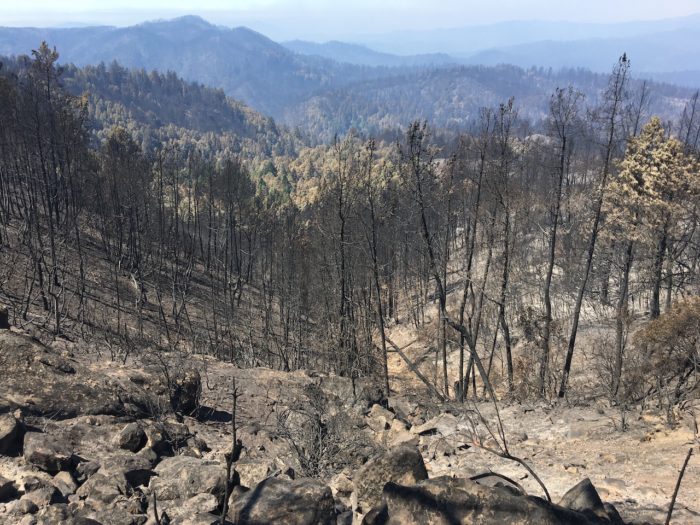
Even though so much has been written about the fires of 2020—particularly in this space —it is still hard to remember clearly what it was like to live in California during that time. Part of this is because so much has happened since then. The COVID-19 crisis took more turns with the spike in cases around the holidays and the introduction of vaccines. One of the more divided and consequential elections in the history of the country took place, one that came to a close with violence in the nation’s capital. And some would say that the first half of 2021 has been marked with a strange uncertainty as the country moves into a post-COVID new normal in fits and starts.
But to truly appreciate the timeline below, it is nonetheless important to recall our state of mind when we all went to bed on the evening of Aug. 15. At that time, we were in our sixth month of the COVID crisis. People were working from home, children were “out of school,” and while we had enjoyed a dip in cases in June and July, the state was experiencing its second wave of COVID-19 cases. The racial unrest that swept the country in May and June was still simmering. The drought was in full swing and the state was experiencing a historic heat wave. Temperatures reached 99 degrees in Sacramento earlier that day. A number of areas throughout the state experienced blackouts in the previous few days.
While the fires of 2020 burned across nearly every forest type in the state, the timeline below specifically tracks its progress through the coast redwoods and giant sequoia. Part of that is, of course, because of who we are, but also because of what these iconic trees mean to people. No one likes to see a forest on fire, people being evacuated, the loss of life and property. But losing these great trees that represent so much to so many people, that struck a deep emotional chord in people around the world.
Any discussion of the California fires in 2020 should acknowledge the tremendous debt of gratitude that we owe the firefighters and other emergency responders who served our communities so selflessly during that time. Our hearts go out to the families of those who lost their lives, as well as those who lost homes and property or were displaced. This was a difficult time for all of us, but none more than these members of our community who were directly affected.
Timeline
This timeline doesn’t seek to capture the entirety of the fires. It ends before they are all contained. Instead, it covers a period of a little more than a month, a month that forever changed our sense of urgency around how we think about wildfire and redwoods.
August 16, 2020
Beginning early in the morning, thousands of lightning strikes hit the ground across the state. Most of these were not associated with rain—a phenomenon called dry lighting—which created ideal conditions for wildfire. Satellites with the National Oceanic and Atmospheric Administration captured many of these on video from Aug. 16-18.
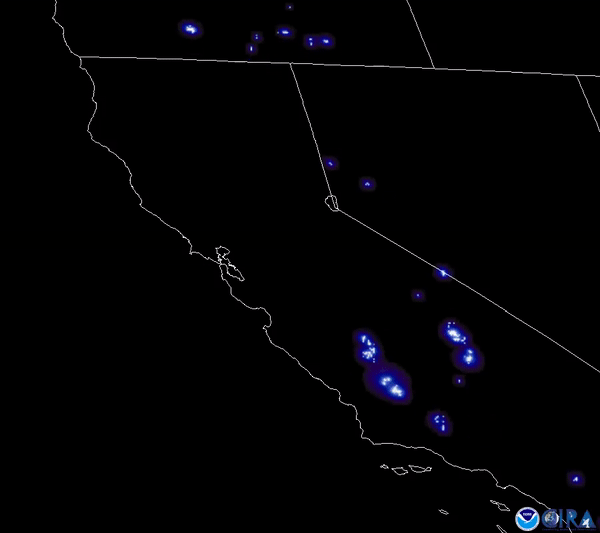
From the ground, the unusual fireworks in the atmosphere were spectacular:
Rare thunder and lightning storm over the SF Bay Area. pic.twitter.com/OZQC5wJjbk
— Paul Robbins Holland (@paulrholland) August 16, 2020
Early in the day, California Department of Forestry and Fire Protection, CAL FIRE, reports that it is responding to numerous reports of fire in the Santa Cruz Mountains. By the end of the day, the agency will have responded to nearly two dozen fires in Santa Cruz and San Mateo counties.
CAL FIRE CZU is responding to numerous new fires throughout San Mateo and Santa Cruz Counties. pic.twitter.com/eIOrbxR4nI
— CAL FIRE CZU (@CALFIRECZU) August 16, 2020
Governor Gavin Newsom signs an emergency proclamation related to the West Coast heat wave and energy use.
August 17, 2020
Fires across San Mateo and Santa Cruz counties reach 1,000 acres, and have now been combined under the title CZU August Lightning Complex.
If you would like to receive email updates from CAL FIRE CZU regarding the San Mateo-Santa Cruz August Lightning Complex fires, please click this link and register.https://t.co/CqV8OrDcO6 pic.twitter.com/iVR0gnpz5j
— CAL FIRE CZU (@CALFIRECZU) August 18, 2020
Several small fires ignite across Lake, Napa, Sonoma, Solano, and Yolo counties, and are eventually merged into the LNU Lightning Complex.
California Department of Forestry and Fire Protection, CAL FIRE, announces that there are 29 active wildfires across California.
August 18, 2020
Wildfire rapidly moves through Big Basin Redwoods State Park, destroying historical infrastructure. California State Parks closes the park indefinitely. Eventually the fire will burn more than 97% of the 18,000-acre forest.
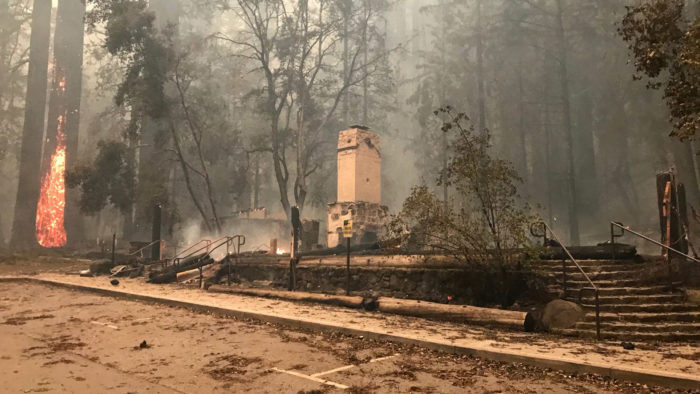
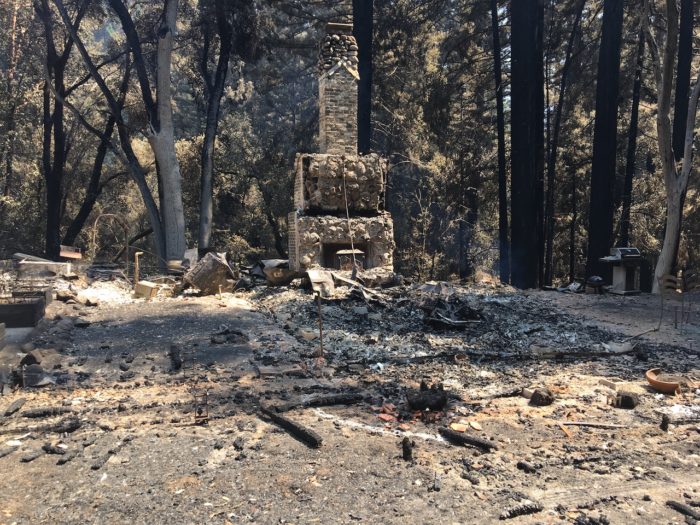
Fire moves through the entire Cascade Creek property, which the League is in the process of purchasing. The fire would burn in varying intensities across the property, but most of the old-growth coast redwoods would survive. The League finalized its purchase of the property in December.
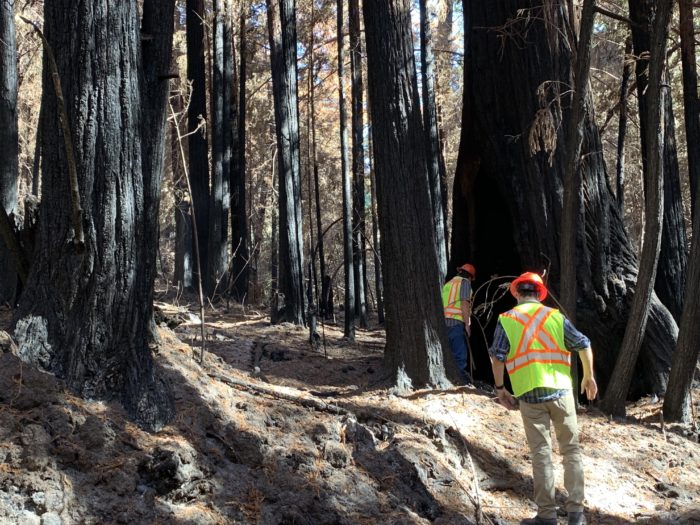
With hundreds of fires growing throughout the state, Gov. Gavin Newsom declares statewide state of emergency, committing additional funding and resources to fighting the fires.
Evacuation orders are declared in Santa Cruz and San Mateo counties.
Dolan Fire in Big Sur starts in the evening just north of Limekiln State Park. The suspected cause is arson.
August 19, 2020
California State Parks announces the closure of more than two dozen parks due to ongoing fires. Many of these are in the coast redwood range—including Big Basin Redwoods State Park, Butano State Park, Henry Cowell Redwoods State Park, and Portola Redwoods State Park.
The Castle and Shotgun fires are ignited by lightning in the Sierra Nevada early in the morning, and will soon be managed as one incident under the name SQF Complex.
August 20, 2020
Fire has moved onto the San Vicente Redwoods in the Santa Cruz Mountains, which Save the Redwoods, Peninsula Open Space Trust (POST), and Sempervirens Fund protected in 2011. Even though the fire burned intensely in some part of the property, a prescribed burn earlier that year reduced the impacts, confirming the value of this forest management strategy.
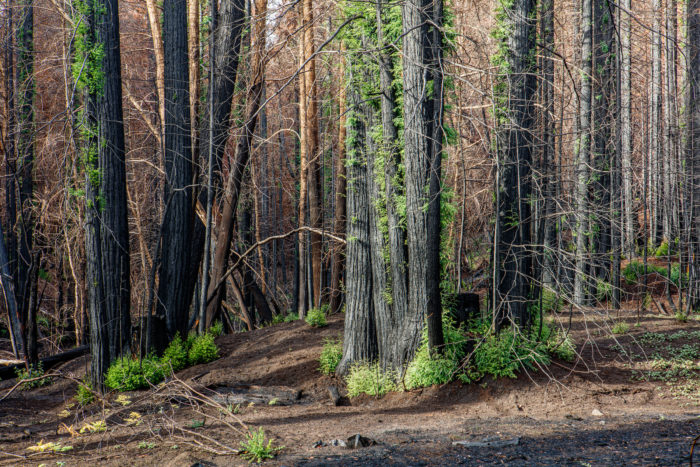
August 21, 2020
Then-League Director of Science Kristen Shive expressed cautious optimism about the fate of coast redwoods in the fire zone, noting that the trees are extremely resilient to wildfire, and that most should do well in time.
“In general, coast redwoods are really resilient to fire, with exceptionally thick bark that insulates them from the heat. Even if fire consumes their crowns—lethal for most conifers—the trunk of a redwood can sprout back to life. If this happens, they will look really rough for a while and it will take years for their crowns to fill out again, but the tree will have survived.”
August 23, 2020
The Dolan Fire reaches Pfeiffer Burns State Park and its coast redwoods.
August 25, 2020
The League joins with Sempervirens Fund and Mountain Parks Foundation to create the Big Basin Recovery Fund to meet the park’s initial needs following the infrastructure damage in the CZU Complex fire. Ultimately, the groups raised about $875,000 from hundreds of donors to help with the initial relief effort.
The Redwoods have been around for thousands of years and are some of our most beloved trees in California. I’m hopeful the vast majority will withstand this devastating wildfire season, but we have to speak truth about the threat that climate change poses to their future. https://t.co/EU3dUyYxp7
— Vice President Kamala Harris (@VP) August 25, 2020
The Walbridge Fire, which will eventually be folded into the LNU Lightning Complex, moves into old-growth grove at Armstrong Redwoods State Natural Preserve. Crews from CAL FIRE do an amazing job keeping the fire at low levels so as to actually help the forest’s health. Armstrong Redwoods State Natural Reserve remains closed, though it is hoped that the park will reopen later this month.
Fire crews work to manage the #WalbridgeFire and protect old-growth trees at Armstrong Redwoods State Natural Reserve @NorthBayNews #wallbridgefire pic.twitter.com/INZWo2Hzta
— Beth Schlanker (@BethSchlanker) August 26, 2020
August 27, 2020
The SQF Complex Fire, formerly called the Castle Fire, still two miles from the nearest giant sequoia grove, and moving in the opposite direction, prompting hope that giant sequoia won’t be harmed.
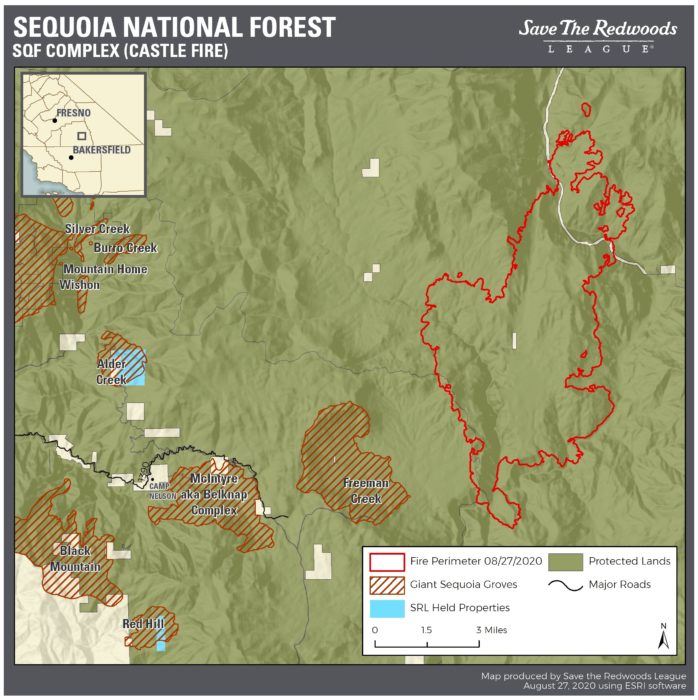
September 1, 2020
Newsom surveys damage at Big Basin Redwoods State Park.
Record breaking temperatures. Record droughts.
We’re in a CLIMATE CRISIS.
And what we're experiencing in California is coming to every community — all across the United States of America — unless we get our act together on climate change. pic.twitter.com/BulCzB7tKs
— Gavin Newsom (@GavinNewsom) September 11, 2020
September 4, 2020
A change in wind direction draws SQF Complex fire to within a mile of Freeman Creek Grove.
September 7, 2020
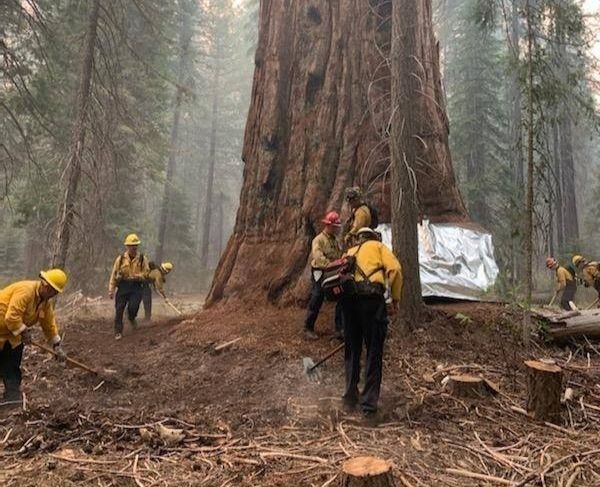
September 9, 2020
Skies through Northern California are unusually dark from thick smoke due to fires in Oregon and California.
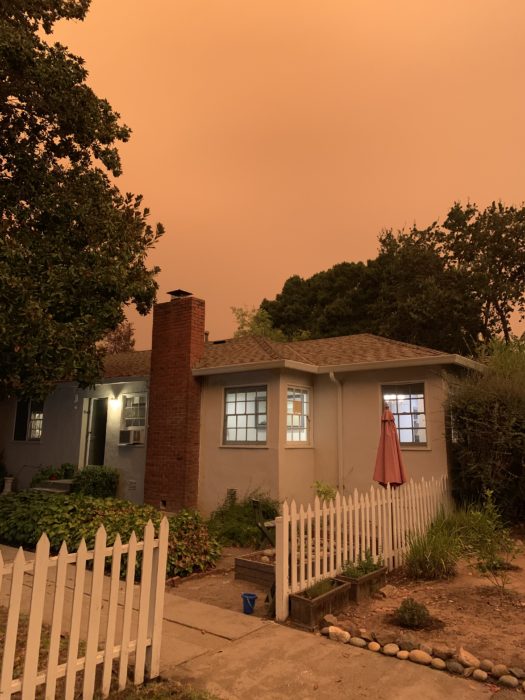
September 10, 2020
League President and CEO Sam Hodder joins a group of nonprofit leaders to get their first on-site look at the fire impacts at Big Basin Redwoods State Park. He shot this video on his way in.
Expansion of Creek Fire, part of the SQF Complex, prompts crews at Mariposa Grove in Yosemite to clean up debris and other flammable material around the grove. League Giant Sequoia Forest Fellow lent a hand. Fortunately, the fire would never reach the grove.
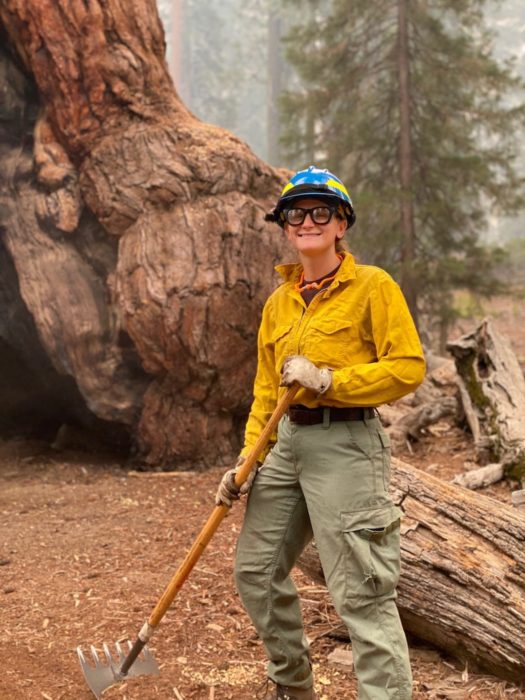
September 11, 2020
The SQF Complex fire moving slowly through Freeman Creek grove, as fire crews manage a healthy burn on the forest floor.
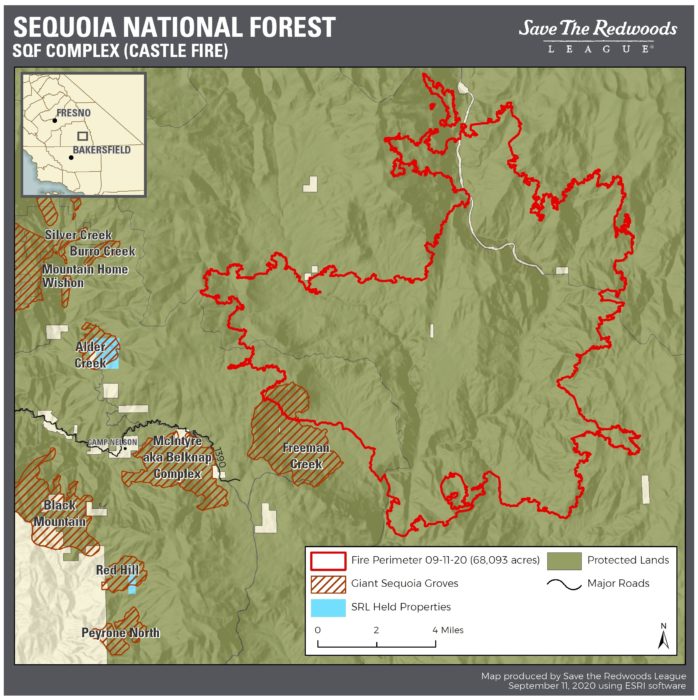
September 13, 2020
After making a strong push overnight, SQF Complex fire burns across League’s Alder Creek property. Later reports indicate that the fire burned at different intensities across the property (low, moderate, and high), and that about 80 of the oldest and largest giant sequoia were killed in the flames.
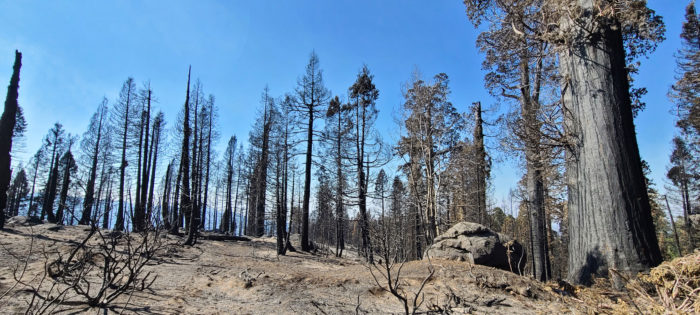
Photo by Kyle Cooper, Save the Redwoods League
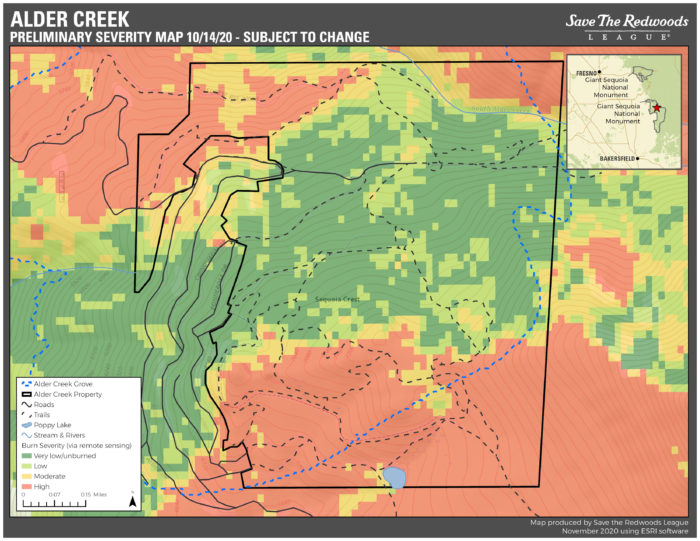
September 14, 2020
Fire now in seven giant sequoia groves:
- Alder Creek
- McIntyre aka Belknap Complex
- Burro Creek
- Freeman Creek
- Maggie Mountain
- Middle Tule
- Mountain Home
- Silver Creek
- Wishon
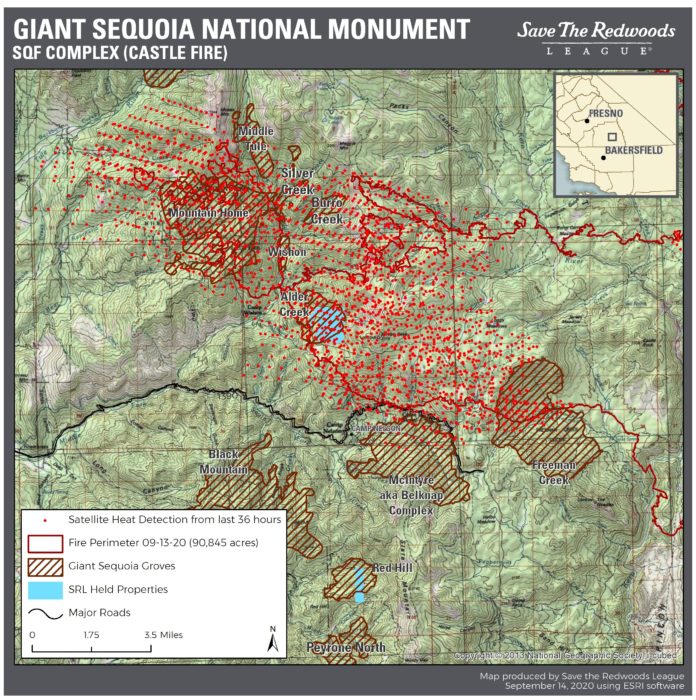
Eventually, the SQF fire would burn into 22 giant sequoia groves, killing as many as 10,600, or 14%, of the largest ancient trees.
September 15, 2020
Spare a thought for the giant sequoia. They're tough, but it's hard out there right now. (photo by Max Forster) pic.twitter.com/tx2z2D95EM
— Save the Redwoods League (@savetheredwoods) September 15, 2020
September 16, 2020
League President and CEO Sam Hodder talks about the fire at Alder Creek in a heartfelt blog post:
“We are all so tired. Each day seems to bring a new unprecedented challenge to knock us down and dampen our resolve to get back up and keep moving. We don’t need to hear the list of crisis after crisis that we are enduring because it is carved into our lungs, painted on the boarded up windows of our towns, echoing in the shouts from our streets, and burned into the hills of our rural landscapes.
Today we are being tested again. And again, we are putting our hope in the resilience of the redwood forest to help us through the storm and renew our faith in our own resilience. In the past 48 hours, fires have burned through thousands of acres of ancient giant sequoia forest.”
September 27, 2020
Glass Fire starts in Napa County. The cause is underdetermined.
September 28, 2020
Fire enters Bothe-Napa Valley State Park and begins to burn through the eastern-most redwood forest in California.
Reflection
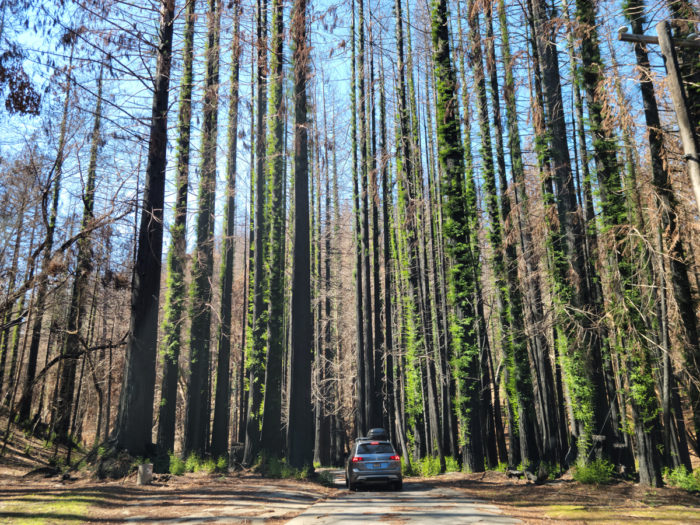
In 2020 more than 4.2 million acres burned across California.
Even though this timeline ends in September, It would be some time before the major fires in the redwoods were contained. The LNU Complex fire was contained on Oct. 2 after burning 192,000 acres. Firefighters would declare the CZU Complex fire fully contained on Oct. 20, 2020, after burning 86,509 acres. The SQF Complex fire was contained on Jan. 6, 2021, after burning 174,178 acres.
More than 81,000 acres of coast redwoods burned (5% of the range), including 11,200 acres of old growth (9.5% of the remaining old growth). More than 16,500 acres of giant sequoia burned (about 35% of the range), mostly old growth.
As one might expect, the wildfires of 2020 prompted a strong legislative response. Newsom’s budget included a record $2 billion to fund wildfire response and prevention, as well as forestry practices aimed at making the forests more resilient. The League is also supporting measures that will encourage cultural and prescribed burning and codify a new state wildfire plan.
Get involved
Help the League create a more fire-ready future for our coast redwood and giant sequoia forests by making a contribution to the League’s Wildfire Fund.
Send an email to Agriculture Secretary Tom Vilsack, who oversees the U.S. Forest Service, asking for immediate action to protect our giant sequoia forests.
Follow and take part in the planning for the reconstruction of Big Basin Redwoods State Park.
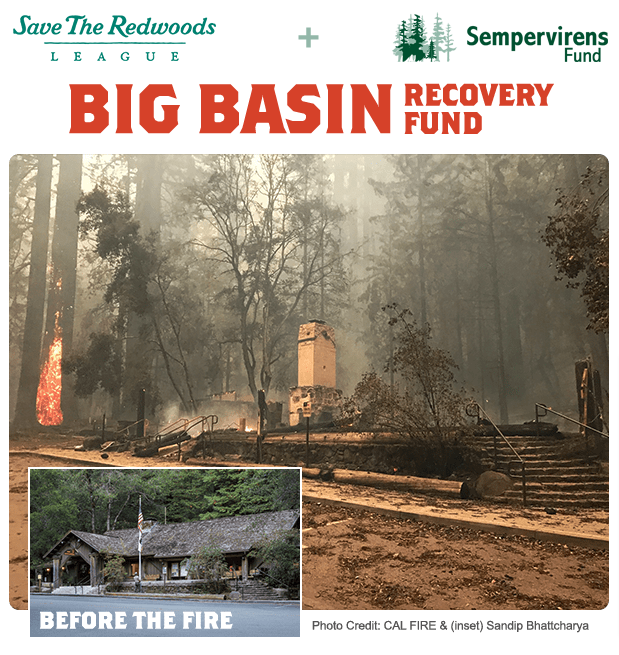


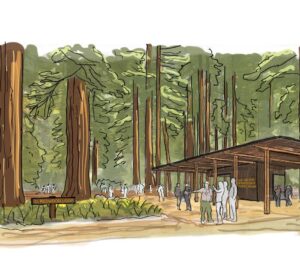

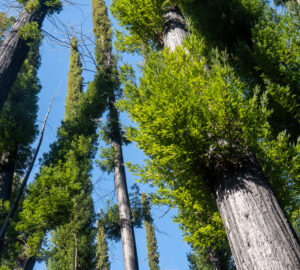
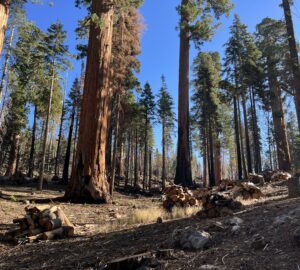
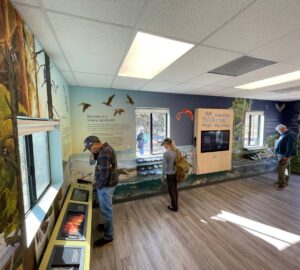
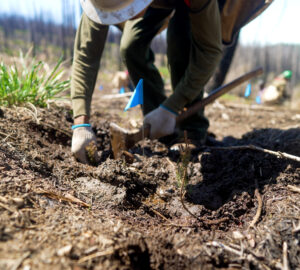
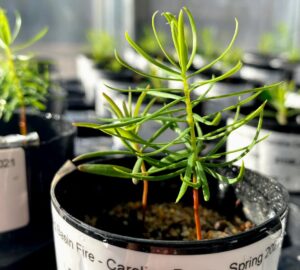
One Response to “One month last summer: wildfires in the redwoods”
Crissa
The only highlight I think you missed was the wall cloud. Alot of us stayed up to see the storm arrive, hoping it wouldn’t be so bad, making sure to tuck everything down. As it hit the mountains, there were several big trees just smashed by what sounded like a tornado. An intense beginning to what turned into that fireworks show.
Watching the satellite intensity maps march closer and closer to my home, the fire got to the fire road that we maintain behind the neighborhood on our hikes.